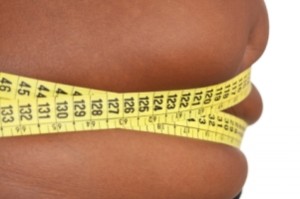 Most people have areas of their body they wish they could change. There are hundreds of workouts that promise to tone your tummy, trim your waist or tighten your butt. It’s certainly possible to build muscle in these areas, but an article from CNN points out that you may not be able to change the underlying shape of your body, even with significant weight loss.
Most people have areas of their body they wish they could change. There are hundreds of workouts that promise to tone your tummy, trim your waist or tighten your butt. It’s certainly possible to build muscle in these areas, but an article from CNN points out that you may not be able to change the underlying shape of your body, even with significant weight loss.
“People come in with unrealistic expectations from magazines and spot-reducing,” says Gary Foster, director of Temple University’s Center for Obesity Research and Education. “That doesn’t happen. When you start to lose fat, it’s proportionate throughout your body, whether it’s your neck, waist, ankle circumference. You’ll come out smaller but have the same body shape.”
In other words, a person who is pear-shaped will remain a pear, and a person who is apple-shape will remain an apple. “Basically, when we lose weight, we lose weight all over in exactly the proportion that’s distributed throughout our body,” says Susan Fried, director of the Boston Obesity and Nutrition Research Center at the Boston University School of Medicine. CT scans, dexa scans and MRIs reveal that as a person loses weight, fat is reduced evenly around the body.
However, the most dramatic difference is likely to show in the area that starts with the highest concentration of fat cells. Maggie Sorrells, who has lost 300 pounds, explains that even after her weight loss, she’s still proportionately heavier around her hips. “My hips were like 73 inches,” said Sorrells, but now her hips measure at 39 inches. “It’s crazy to think how much they’ve come down.” Foster says that the area where fat accumulates on a person’s body is determined by hormones and genetics.
Furthermore, the number of fat cells in the body can increase through overeating, but the total number will not decrease with weight loss. “If anyone of us overeats long and hard enough, we can increase the number of fat cells in our body,” Fried explains. “When we lose weight, we don’t lose the number of fat cells.” The only way to reduce the number of fat cells in the body is through procedures like liposuction, which is not recommended for the obese.
So, where does the fat go when we lose weight? These fat cells shrink, but they are still able to expand. On average, humans carry about 10 billion to 30 billion fat cells, but those who are obese can have up to 100 billion fat cells.
Although fat concentrated around the body is considered more damaging to your health than fat in the hips or butt, the important thing to remember is that maintaining a healthy weight is more important than achieving the ideal body shape. Some of us may always be curvy in the hips and some of us may always have a pooching tummy, but our diet and exercise efforts should be aimed towards reaching and maintaining a healthy weight.
Also Read:
